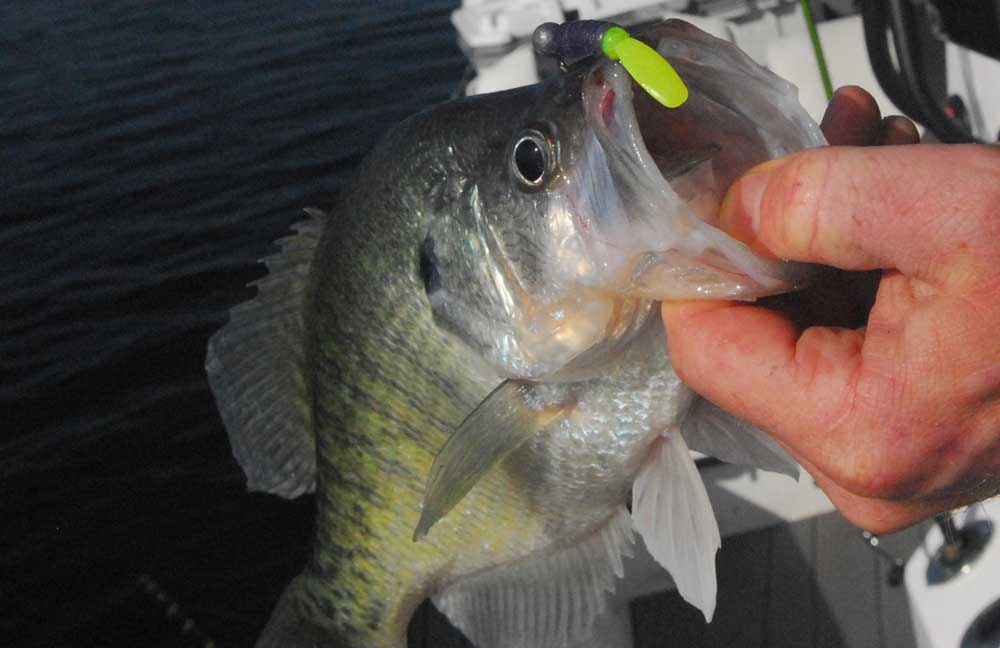Black Or White: Black, white crappie are the same, but also different
Published 6:00 pm Friday, May 19, 2023

- When crappie fishing on major East Texas lakes, fishermen are just as likely to find black crappie as they are white crappie. When it comes to a daily bag limit, they all count the same.
They are the same but different. Black and white crappie can be found in lakes throughout East and Central Texas, and when coming out of the fryer there is not a lick of difference between the two different species.
Crappie are from the same family as sunfishes and black bass. Their obvious difference between each other is their coloration, however, the true determining factor in identification is the number of spines in their dorsal fin. A black crappie has seven or eight spines while white crappie will have six or less.
“From a functional standpoint or management standpoint we treat them the same,” explained Tim Bister, Texas Parks and Wildlife Department Inland Fisheries district biologist from Marshall. Because of that, fishermen are permitted a total of 25 per day with a minimum 10-inch length limit.
Bister said the two can be found on lakes throughout East Texas, but in some cases one may be more prominent than the other.
“It depends on water quality and clarity. White crappie usually do better in stained waters because black crappie are more sight feeders,” the biologist explained.
Possibly because of that water clarity distinction, white crappie are more likely to be found in the upper end of a lake, although both share structure in more open water.
Bister added that while the two often co-mingle, white crappie might be easier to catch at times on minnows because of their diet. While a white crappie’s diet will transition from a small food source like bugs and invertebrates to fish, black crappie can survive their entire life solely on invertebrates.
Hybrids of the two are common in any waters, but there seems to be little chance of the crosses becoming the most dominant on any lake.
“That is what makes different species different species. They tend to spawn among themselves. There is occasionally interbreeding between two species, like white and yellow bass,” Bister said.
One factor in the survival of the individual species is that black crappie tend to spawn when the water is a couple of degrees cooler. Crappie spawn begins when the water temperature reaches 60 degrees, but the peak is between 68 and 72 degrees.
There continues to division among crappie fishermen over the use of forward-facing sonar. Those who do not use it remain concerned that its use can put too much pressure on a population.
Citing crappie’s ability to reproduce, Bister does not see it as an issue.
“Crappie are very prolific. They have really good years and years they are not really prolific, but they are so prolific on their good years,” he said.
When guiding clients, Lindale guide Clay Gann is looking for either white or black crappie. When fishing tournaments with partner Todd Froebe, the goal is to find white crappie, which tend to grow larger in most reservoirs.
Texas’ state records are an indication he is on the right track. The state record for white crappie is 4.56 pounds while the black bass record is 4 pounds, and with the exception of Lake Fork and Toledo Bend Reservoir the white crappie record exceeds the black crappie on major East Texas reservoirs.
The problem is it can be difficult to target one over the other. Gann, who relies heavily on forward-facing sonar, says the modern electronics are not much help when trying to separate the two under water.
“I am not that good. There is someone who probably says they can,” Gann said.
While he said he has never seen a white crappie in an aquarium, one thing he has noticed on the black crappie he has seen is that the two pelvic fins on their front lower body are usually flared out. Gann said this may make them look larger than they really are on a sonar.
He has found a better way to differentiate is the location fished.
“On most lakes there is distinction on where you catch them. You are going to catch in same areas, but most lakes you don’t. I have found at Palestine you are going to catch white crappie in timber. If I am fishing bridges or shooting docks I mainly catch black crappie.”
At Fork he said white crappie can come around laydowns, docks and bridges.
Gann said Lake O’the Pines is loaded with black crappie, with Palestine and Fork running close behind.
However, while those are larger lakes, the guide said he has fished a number of smaller lakes that seem to have predominately a black crappie population or no white crappie at all.
Gann said what black crappie lack in size they make up in vigor.
“A big black crappie fights like a sand bass,” he said.
Another factor in favor of the fish over technology is that while crappie fishing is growing in popularity whether because fishermen want to keep fish, tournaments or technology, it still lags far behind bass fishing. There simply just are not enough fishermen to make a dent in the population. TPWD’s Bister said a recent survey at Caddo Lake showed bass fishing represented 68% of all fishing activity while crappie fishing was just under 30%.
For information on crappie fishing with Gann, call 903-571-5243 or find him on Facebook.






